Is now the right time to lock in milk prices? Learn essential strategies for dairy farmers to manage risk and boost profits.
Summary: The volatility of milk prices has many dairy farmers wondering, “Is now the time to lock in milk prices?” With Class III milk contracts trading over $22 per hundredweight (cwt.), the potential for risk management through hedging becomes enticing. Supply chain disruptions, adverse weather conditions, increased demand, global markets, and inflationary pressures drive these historical price levels, creating challenges and opportunities. Class III prices have historically varied between $13 and $16 per cwt Throughout the last decade. Locking in milk prices may secure a farmer’s financial future, enabling them to stabilize income even if market prices drop. Consulting with a broker can provide the necessary guidance to navigate these complexities and help make more informed decisions in this unpredictable market. Dairy industry Locking in milk prices isn’t just about stabilizing income; it’s a strategic move to manage risk in an unpredictable market.
- Current Class III milk contracts are trading over $22 per hundredweight (cwt.), presenting an opportunity for risk management through hedging.
- Factors driving these historic price levels include supply chain disruptions, adverse weather conditions, increased demand, global markets, and inflationary pressures.
- Historically, Class III prices have varied between $13 and $16 per cwt. Over the last decade.
- Locking in milk prices can help farmers stabilize their income even if market prices drop.
- Consulting with a broker is essential for navigating these complexities and making informed decisions.
- Locking in milk prices is a strategic move to manage risk in an unpredictable market.

Are you aware milk prices have reached historic levels, hitting over $22 per hundredweight (cwt.) for forthcoming contracts? This increase creates a unique challenge and opportunity for dairy producers and experts. With such high futures market prices, the question arises: Is this the best time to lock in milk prices to protect gains and limit risk? Let’s examine why this is an important issue and possible solutions. Class III milk futures market prices are at historically high levels. This creates a strategic opportunity for farmers, allowing them to hedge their risks and take control of their earnings while proving their critical role in controlling the rise.
What’s Driving the Unprecedented Surge in Milk Prices?
Let’s look at the present state of milk pricing on the futures market. According to the latest sources, Class III milk futures for the following months—particularly September, October, and November—are trading at about $22 per hundredweight (cwt). This historically uncommon level indicates potentially good circumstances for dairy producers, providing a ray of light in an otherwise difficult market. This pricing increase can potentially deliver significant advantages to the sector, giving grounds for hope.
Recent market data indicates a significant gain over the previous quarter. A few months ago, Class III milk prices hovered around $18-$19 a cwt. This growing tendency has raised eyebrows and sparked hope across the sector. Recent research suggests that numerous reasons might be driving these very high prices.
First and foremost, supply chain disruptions have had a considerable impact. Post-pandemic recovery efforts have raised transportation costs and delays, affecting every aspect of the dairy supply chain. Adverse weather conditions in vital dairy-producing areas have reduced milk production levels.
Demand has also shifted. The reopening of restaurants and food services has increased dairy demand, particularly cheese and other Class III milk goods. Global markets can influence pricing. For example, increasing export demand owing to lower supply in other key exporting nations such as New Zealand has boosted US milk prices.
Furthermore, inflationary pressures raise input costs for feed and other agricultural necessities, causing farmers to seek higher prices to remain profitable. Given the present economic context, it is advisable to consider locking in these prices as a buffer against any decline.
These reasons contribute to the present high price of Class III milk contracts. Understanding these variables allows dairy producers to better judge whether to lock in milk prices. This information provides them with viable tactics for managing the rise, ensuring they are ready for market situations.
Why Understanding Historical Context is Crucial
To completely understand the present rise in milk costs, it is necessary to consider the historical backdrop. Monitoring past averages better explains why current situations offer ample opportunity. Historically, Class III milk prices have been quite volatile. For example, prices have consistently varied between $13 and $16 per hundredweight (cwt.) throughout the last decade, with noticeable peaks and troughs.
One of the most essential peaks happened in September 2014, when prices reached a record $24.60 per cwt. In May 2020, however, prices fell to roughly $12.14 per cwt due to market disruptions caused by the COVID-19 epidemic. These changes emphasize the dairy market’s inherent risks and uncertainties.
We’re approaching record highs, with futures trading at $22 per cwt. When compared to the average price of about $16 per cwt. Today’s numbers are undoubtedly the most notable over the previous decade. This background highlights the possible risk-management benefits of locking in pricing today. Securing these relatively high prices may help protect against any market downturns.
Furthermore, the present market is formed by several other variables, including supply chain interruptions and growing global demand, which add another element of unpredictability. Given these dynamics and the historical background, locking in milk prices now might be prudent to secure your financial future.
Locking In Milk Prices: Understanding the Basics
Look at locking in milk pricing and how it affects a farmer’s revenue.
Imagine you are a dairy farmer. You’re concerned about market volatility, which might make your income uncertain. Locking in pricing via the futures market enables you to establish your milk price ahead of time, decreasing unpredictability.
Here’s an example:
- Scenario 1: You set a price of $22 per hundredweight (cwt) for your milk. Later, if the market price falls to $18 per cwt, you will still get your locked-in price. You make more than the current market worth.
- Scenario 2: If the market price climbs to $25 per cwt, the locked-in price will result in a lower payout. However, this situation allows you to prevent the possible revenue loss if prices unexpectedly collapse.
- Scenario 3: The effect is minor if the market price remains close to your locked-in pricing. You enjoy peace of mind knowing that your income will not change much.
Understand that this is not risk-free. While locking in prices may protect against falls, it may also result in losing out on more considerable earnings if market prices rise. Consulting with a broker may help you navigate these waters more successfully.
The Strategic Advantages of Locking in Milk Prices
Locking in milk prices has various significant benefits, notably in risk management and financial stability. Farmers may protect themselves from market volatility by getting a predetermined product price. This assurance is helpful regarding budgeting and financial planning.
Consider the situation of John, a dairy farmer in Wisconsin. John set his milk rates at $20 per cwt for the second half of 2022. When the market price fell to $18 per cwt due to unanticipated global economic events, such as a sudden drop in demand or an increase in production costs, John could retain his income expectations. “Locking in prices gave me peace of mind,” John said. “I didn’t have to worry about the market fluctuations impacting my bottom line.”
Industry analysts share this attitude. Agriculture Secretary Tom Vilsack states, “Farmers who lock in their prices can navigate uncertain markets with greater confidence.” They are protected from sharp price declines and the financial pressure that such changes may cause” [source: USDA Report on Dairy Futures, 2023].
The benefits of these strategies are apparent from the statistics. University of Minnesota research indicated that dairy producers who used price-hedging tactics had a 15% lower revenue volatility than those who did not. This means their income was more stable and predictable, even in a fluctuating market. Furthermore, brokers claim that farmers increasingly turn to these technologies, understanding the protection they bring in an unstable market.
Financial stability is another critical advantage. When dairy farms can better estimate their revenue, making educated choices regarding equipment, feed, and other vital areas becomes more accessible. This stability may result in overall growth and increased agricultural efficiency.
Locking in milk prices gives farmers the tools to better manage risks and provides a solid financial basis for their businesses. Capitalizing on market fluctuations might be a wise step for long-term success.
The Trade-offs and Decisions Behind Locking in Milk Prices
While locking in milk pricing provides stability, it carries several risks and concerns. The most evident danger is the possibility of lost chances. If market prices climb considerably beyond the locked-in rate, farmers will earn less than if they did not hedge. Our last example demonstrated this since a hypothetical upswing resulted in a loss in the futures market.
Another critical issue is the expense of this procedure. Brokers collect costs for each transaction, which may accumulate over time, especially if contracts are often exchanged. For example, with an average brokerage cost of $70 per transaction and each contract needing two transactions, these expenses may significantly reduce prospective earnings. These fees may have a considerable financial effect when applied to many agreements.
However, the value of talking with a broker cannot be emphasized. Brokers have essential experience and may give strategic advice specific to your circumstance. They guide farmers through the complexity of the futures market, ensuring that they make educated choices. Balancing the costs and advantages of their services is critical—after all, their experience might help you avoid expensive errors.
Finally, determining whether to lock in milk prices requires assessing the risks against the possible benefits. This is not a one-size-fits-all answer. Before making a move, farmers should consider their financial status, market prospects, and risk tolerance. Consulting a broker for tailored assistance will help you make the right option for your farm’s future.
Exploring Alternative Risk Management Strategies
Dairy producers use various risk management measures in addition to futures contracts. Forward contracts, for example, enable farmers to sell their milk at a specified price straight to a buyer. This strategy provides price stability while avoiding the complicated dynamics of the futures market.
Another alternative is to employ future options that provide the right but not the obligation to sell milk at a specific price. This provides flexibility and a mechanism to hedge against adverse price fluctuations while still having the opportunity to profit from positive developments.
Insurance policies tailored explicitly for dairy producers are also available. These policies, such as the USDA’s Dairy Income Protection (DRP) program, may protect against sudden declines in milk prices or income, adding an extra degree of protection.
Exploring these different tactics may provide a more complete risk management strategy, enabling farmers to choose the best option based on their conditions and risk tolerance.
The Bottom Line
The basics of locking in milk prices via the futures market provide dairy producers with a possible route to stability in the face of volatile market circumstances. Whether the USDA announces an unexpected fall, a surprising upsurge, or market stability, the price-locking system acts as a risk-mitigation tool, ensuring predictable returns.
With Class III milk prices near record highs, the current market may be ideal for preemptive steps. The noted high prices provide a unique chance to lock in rates that may protect against future downturns. Partnering with a qualified broker can help you navigate the intricacies and make educated choices corresponding to your company objectives.
As you decide on the next move, remember the dairy market’s long-term tendencies and future changes. Can these high prices be maintained, or is a correction on the horizon? The answers will define your plan and may make all the difference in ensuring your farm’s profitability and stability in the volatile world of dairy farming.
Learn more:
- Heads Up, Dairy Farmers: Low Feed Prices Won’t Last – Lock Them In Now!
- Is the Summer Heat Finally Over? Dairy Farmers See Milk Production Stabilize, but Challenges Remain!
- Big Milk Checks and Low Feed Costs: A Profitable Summer for Dairy Producers
 Join the Revolution!
Join the Revolution!
Bullvine Daily is your essential e-zine for staying ahead in the dairy industry. With over 30,000 subscribers, we bring you the week’s top news, helping you manage tasks efficiently. Stay informed about milk production, tech adoption, and more, so you can concentrate on your dairy operations.







 Join the Revolution!
Join the Revolution!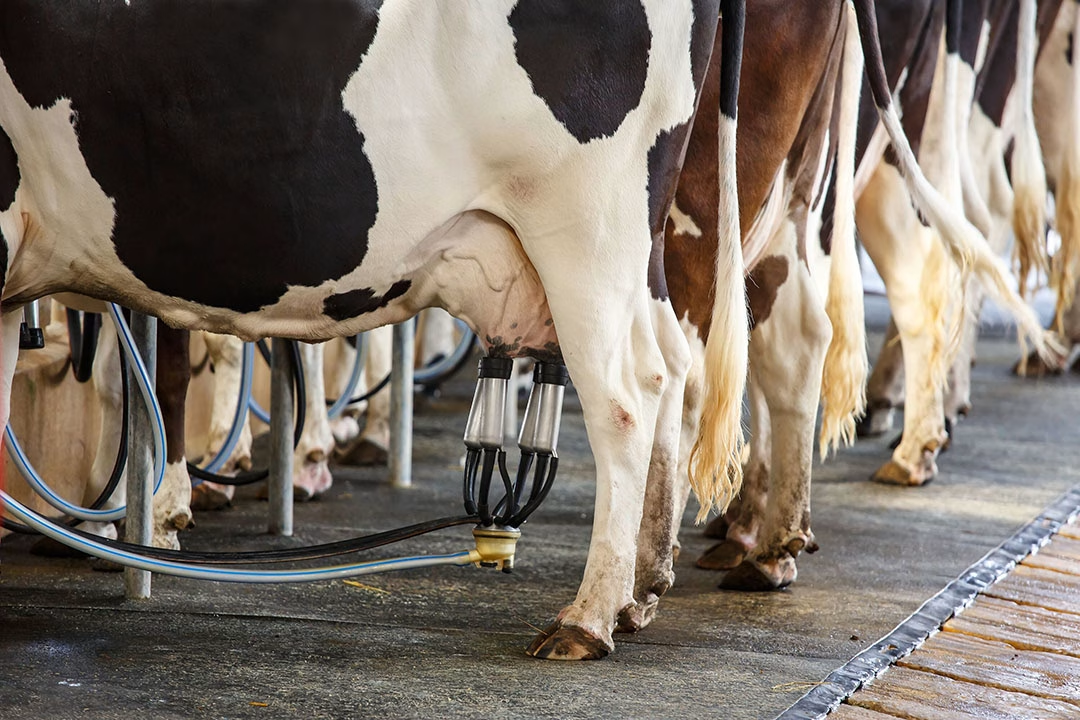



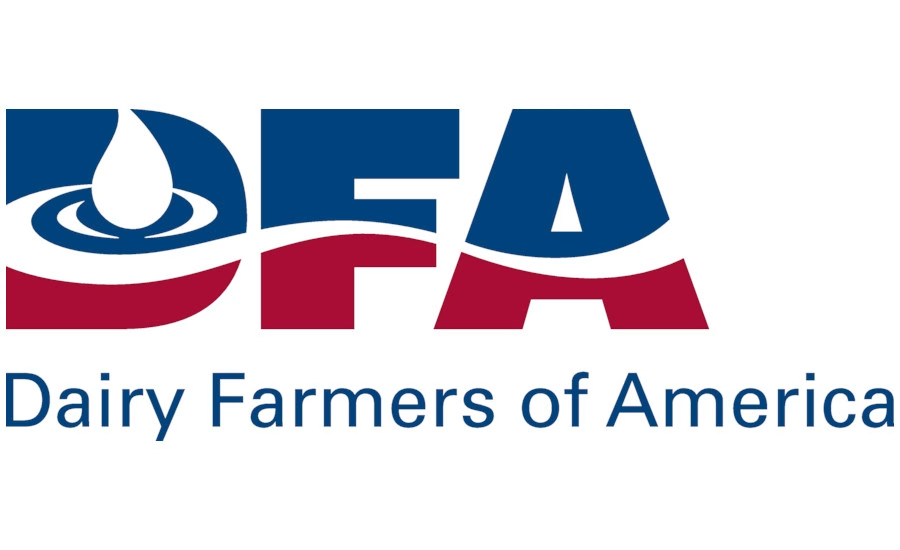
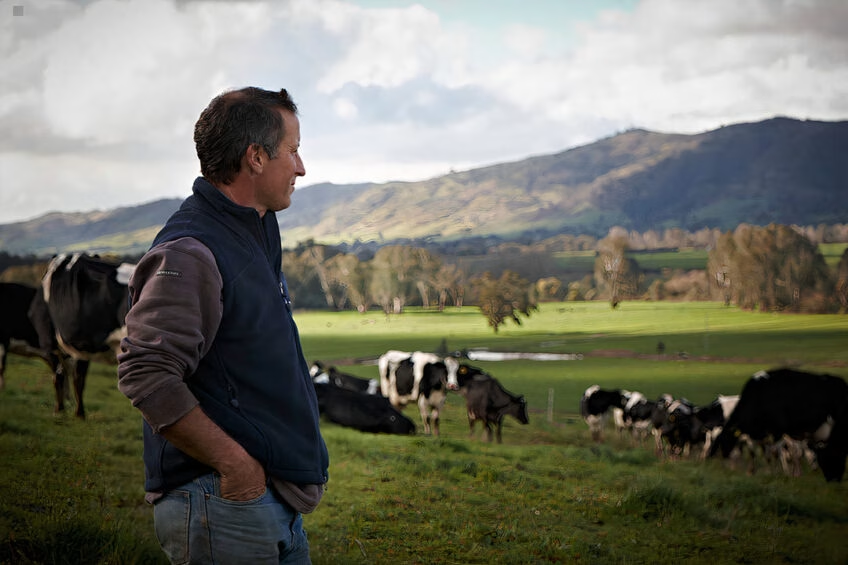




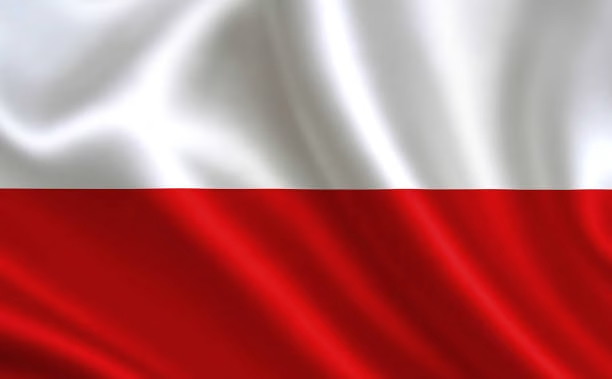
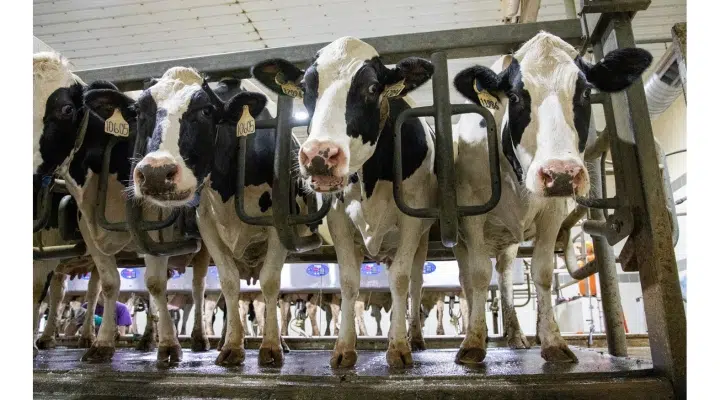





USDA Proposes Return to ‘Higher-Of’ Method for Fluid Milk Pricing: What It Means for Dairy Farmers
Learn how USDA’s plan to bring back the ‘higher-of’ method for milk pricing might affect farmers. Will this change help dairy producers? Find out more.
The USDA plans to bring back the ‘higher-of’ pricing method for fluid milk, a move intended to modernize federal dairy policy based on a comprehensive 49-day hearing that evaluated numerous industry proposals. This method picks the higher price between Class III (cheese) and Class IV (butter and powder) milk, which could signify a notable shift for the dairy industry. Previously, the 2018 Farm Bill had replaced the ‘higher-of’ system with an ‘average-of’ pricing formula, averaging Class III and IV prices with an additional 74 cents. While switching back might benefit farmers, it also introduces risks like negative producer price differentials in 2020 and 2021. The USDA’s proposal seeks to mitigate these challenges and provide farmers financial gains amidst modern dairy economics’ complexities.
Understanding the Federal Milk Marketing Order (FMMO) System
The Federal Milk Marketing Order (FMMO) system, established in 1937, plays a crucial role in ensuring fair and competitive dairy pricing. It mandates minimum milk prices based on end use, providing price stability for dairy farmers and processors across the U.S. Each FMMO represents a distinct marketing area, coordinating pricing and sales practices.
The ‘higher-of’ pricing method for Class I (fluid) milk has long been integral to this system. It sets the Class I price using the higher Class III (cheese) or Class IV (butter and powder) price, offering a financial safeguard against market volatility. This method ensures dairy producers receive a fair price despite market fluctuations.
However, the 2018 Farm Bill introduced an ‘average-of’ formula, using the average of Class III and IV prices plus 74 cents. While aimed at modernizing milk pricing, this change exposed farmers to greater risk and reduced earnings in volatile periods like 2020 and 2021.
A Marathon Analysis: Unraveling Modern Dairy Policy over 49 Days in Indiana
The marathon hearing in Indiana highlighted the complexities of modern dairy policy. Spanning 49 days, from Aug. 23, 2023, to Jan. 30, it reviewed nearly two dozen industry proposals. This intensive process reflected the sophisticated and multifaceted Federal Milk Marketing Order system as stakeholders debated diverse views and intricate data to influence future milk pricing.
Decoding Dairy Dilemmas: The “Higher-Of” vs. “Average-Of” Pricing Methods
The “higher-of” and “average-of” pricing methods are central to understanding their impact on farmers’ incomes. The “higher-of” process, which uses the greater of the Class III (cheese) price or Class IV (butter and powder) price, has historically provided a safety net against dairy market fluctuations. This method ensured farmers got a better price, potentially safeguarding their income during volatile times. Yet, it increased the risk of negative producer price differentials, which reduced earnings in 2020 and 2021.
On the other hand, the “average-of” method, introduced by the 2018 Farm Bill, calculates the price as the average of Class III and IV prices plus 74 cents. While this seems balanced and predictable, it often fails to deliver the highest financial return when either Class III or IV prices exceed expectations. Farmers have noted that this method might not reflect their costs and economic challenges in volatile markets.
The “higher-of” method often offers better financial outcomes during favorable market conditions but brings increased uncertainty during unstable periods. Conversely, the “average-of” method offers stability but may miss optimal pricing opportunities. This debate within the dairy industry over the best formula to support farmers’ livelihoods continues. Thus, the USDA’s proposal to revert to the “higher-of” method invites mixed feelings among farmers, whose earnings and economic stability are closely tied to these pricing mechanisms.
Examining the Potential Implications of the USDA’s Return to the ‘Higher-Of’ Pricing Method
The USDA’s return to the ‘higher-of’ pricing method, while potentially beneficial, also presents some challenges that the industry needs to be aware of. This approach, favoring the higher Class III (cheese) or Class IV (butter and powder) prices, seems more beneficial than the ‘average-of’ formula. However, deeper insights indicate potential challenges that need to be carefully considered.
The ‘higher-of’ method usually leads to higher fluid milk prices but poses the risk of negative producer price differentials (PPDs). When the Class I price far exceeds the average of the underlying class prices, PPDs can become negative, as seen during the harsh economic times of 2020 and 2021, exacerbated by the COVID-19 pandemic.
Negative PPDs can hit farmers’ financial stability, making it harder to predict income and manage cash flows. This reflects the delicate balance between gaining higher milk prices now and ensuring long-term financial reliability.
The 24-month rolling adjuster for extended-shelf-life milk introduces further uncertainty. Its effect on milk pricing needs to be clarified, potentially causing fluctuating incomes for farmers in this segment.
In conclusion, while the ‘higher-of’ pricing method may offer immediate benefits, risks like negative PPDs and uncertain impacts on extended-shelf-life milk pricing demand careful consideration. Farmers must balance these factors with their financial strategies and long-term sustainability plans.
New Horizons for ESL Milk: Navigating the 24-Month Rolling Adjuster Amidst Market Uncertainties
Under the USDA’s new proposal, regular fluid milk will revert to the ‘higher-of’ pricing. In contrast, extended-shelf-life (ESL) milk will follow a different path. The plan introduces a 24-month rolling adjuster for ESL milk to stabilize prices for these longer-lasting products.
Yet, this change brings uncertainties. Laurie Fischer, CEO of the American Dairy Coalition, questions the impact on farmers. The 24-month adjuster is untested, making it difficult to foresee its effects amid fluctuating market conditions. ESL milk’s unique production and logistics further complicate predictions.
Critics warn that the lack of historical data makes it hard to judge whether this method will help or hurt farmers. There’s concern that it could create more price disparity between regular and ESL milk, potentially straining producers reliant on ESL products. While USDA aims to tailor pricing better, its success will hinge on adapting to real-world market dynamics.
Make Allowance Controversy: Balancing Processor Profitability and Farmer Finances
The USDA also plans to increase the make allowance, a credit to dairy processors to cover rising manufacturing costs. This adjustment aims to ensure processors are adequately compensated to sustain profitability and operational efficiency, which is expected to benefit the entire dairy supply chain.
However, this proposal has drawn substantial criticism. Laurie Fischer, CEO of the American Dairy Coalition, argues that the increased make allowance effectively reduces farmers’ milk checks, disadvantaging them financially.
Pivotal Adjustments and Economic Realignment in Dairy Pricing Formulas
The USDA’s proposal adjusts pricing formulas to match advancements in milk component production since 2000. This update ensures that farmers receive fair compensation for their contributions.
The proposal also revises Class I differential values for all counties to reflect current economic realities. This is essential for maintaining fair compensation for the higher costs of serving the fluid milk market. By reevaluating these differentials, the USDA aims to align the Federal Milk Marketing Order system with today’s economic landscape.
Recalibrating Cheese Pricing: Transition to 40-pound Cheddar Blocks Only
Another critical change in USDA’s proposal is the shift in the cheese pricing system. Monthly average cheese prices will now be based solely on 40-pound cheddar blocks instead of including 500-pound cheddar barrels. This aims to streamline the process and more accurately reflect market values, impacting various stakeholders in the dairy industry.
Initial Reactions from Industry Leaders: Balancing Optimism with Key Concerns
Initial reactions from crucial industry organizations reveal a mix of cautious optimism and significant concerns. The National Milk Producers Federation (NMPF) showed preliminary approval, noting that USDA’s proposal incorporates many of their requested changes. On the other hand, Laurie Fischer, CEO of the American Dairy Coalition, raised concerns about the make allowance updates and the impact of extended-shelf-life milk pricing, fearing it might hurt farmers’ earnings.
Structured Engagement: Navigating the 60-Day Comment Period and Ensuing Voting Procedure
To advance its proposal, USDA will open a 60-day public comment period, allowing stakeholders and the public to share insights, concerns, and support. This process ensures that diverse voices within the dairy industry are heard and considered. Once the comment period ends, USDA will review the feedback to gain a comprehensive understanding of industry perspectives, informing the finalization of the proposal.
Afterward, the USDA will decide based on the collected data and input. However, the process continues with a voting procedure where farmers pooled under each Federal Milk Marketing Order (FMMO) cast votes to approve or reject the proposed amendments. Each Federal Order, representing different regions, will vote individually.
This voting process is crucial, as it directly determines the outcome of the proposed changes. For adoption, a two-thirds majority approval within each Federal Order is required. Suppose a Federal Order fails to meet this threshold. In that case, USDA may terminate the order, leading to significant changes in how milk pricing is managed in that region. This democratic approach ensures that the final policies reflect majority support within the dairy farming community, aiming for fair and sustainable outcomes.
Regional Impacts: Navigating the Complex Landscape of FMMO System Changes
The proposed changes to the Federal Milk Marketing Order (FMMO) system are bound to impact various regions differently, given each Federal Order’s unique economic landscape. Federal Order 1, covering most New England, eastern New York, New Jersey, Delaware, southeastern Pennsylvania, and most of Maryland, may benefit from more favorable fluid milk pricing due to the higher-of method. With significant urban markets, this region could see advantages from updated Class I differential values addressing the increased costs of serving these areas.
On the other hand, Federal Order 33—encompassing western Pennsylvania, Ohio, Michigan, and Indiana—might witness mixed outcomes. This area has substantial dairy manufacturing, especially in cheese and butter production, which could gain from the new cheese pricing method focusing on 40-pound cheddar blocks. However, the higher make allowance might stir controversy, potentially cutting farmers’ earnings despite adjustments for rising manufacturing costs.
The future remains uncertain for western New York and most of Pennsylvania’s mountain counties, which any Federal Order does not cover. These areas could feel indirect effects from the new proposals, particularly the revised pricing formulas and allowances, which could impact local milk processing and producer price differentials.
While the higher-of-pricing method may benefit farmers by securing better fluid milk prices, the regional impacts will hinge on each Federal Order’s specific economic activities and market structures. Stakeholders must examine the proposed changes closely to gauge their potential benefits and drawbacks.
The Bottom Line
The USDA’s push to reinstate the ‘higher-of’ pricing method for fluid milk marks a decisive moment for the dairy industry. The 49-day hearing in Indiana underscored the complexity of the Federal Milk Marketing Order (FMMO) System. Key aspects include reverting to the ‘higher-of’ pricing from the 2018 ‘average-of’ formula, new pricing for extended-shelf-life milk, and the debate over increased make allowances. Significant updates to pricing formulas and cheese pricing methodologies were also discussed.
The forthcoming vote on these changes is critical. With the power to reshape financial outcomes for dairy farmers and processors, each Federal Order needs two-thirds approval to implement these changes. Balancing modern dairy policy advancements with fair profits for all stakeholders is at the heart of this discourse.
Ultimately, these decisions will affect dairy practices’ economic landscape and sustainability nationwide. This vote is a pivotal moment in the evolution of the American dairy industry, demanding informed participation from all involved.
Key Takeaways:
Summary:
The USDA plans to reintroduce the ‘higher-of’ pricing method for fluid milk, a move aimed at modernizing federal dairy policy. This method, which selects the higher price between Class III and Class IV milk, could be a significant shift for the dairy industry. The 2018 Farm Bill replaced the ‘higher-of’ system with an ‘average-of’ formula, averaging Class III and IV prices plus an additional 74 cents. This change could benefit farmers but also introduce risks like negative producer price differentials (PPDs). The Federal Milk Marketing Order (FMMO) system ensures fair and competitive dairy pricing, and the ‘higher-of’ method usually leads to higher fluid milk prices but also poses the risk of negative producer price differentials (PPDs). Negative PPDs can impact farmers’ financial stability, making it harder to predict income and manage cash flows. The 24-month rolling adjuster for extended-shelf-life milk introduces further uncertainty, potentially causing fluctuating incomes for farmers. The USDA’s proposal to increase the make allowance, a credit to dairy processors, has been met with criticism from industry leaders. The USDA will open a 60-day public comment period to advance its proposal. The proposed changes to the FMMO system will impact various regions differently due to each Federal Order’s unique economic landscape.
Learn more: